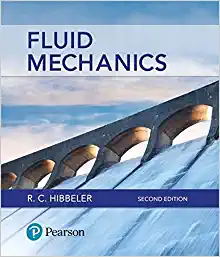Question
for question 6 and 7 and 1 copy and paste for image 1.Scale drawings of three objects, A, B, and C are shown below. Each
for question 6 and 7 and 1 copy and paste for image
1.Scale drawings of three objects, A, B, and C are shown below. Each object has the same mass and uniform thickness, with the mass distributed uniformly within the shaded region. Which one has thegreatestmoment of inertia when rotated about an axis perpendicular to the plane of the drawing at point P? https://cdn.flvs.net/assessment_images/educator_apphysics_v23/6_04_quiz_image_1.jpg
A B C The moment of inertia is the same for all of these objects.
2.A man in a gym is holding an 8.0-kg weight at arm's length, a distance of 0.55 m from his shoulder joint. What is the torque about his shoulder joint due to the weight if his arm is held at 30 below the horizontal?
2.2 N m 4.4 N m 22 N m 37 N m
3. A particular motor can provide a maximum torque of 110 N m. Assuming that all this torque is used to accelerate a solid, uniform, cylindrical flywheel of mass 10.0 kg and radius 3.00 m, how long will it take for the flywheel to accelerate from rest to 8.13 rad/s?
2.83 s 3.33 s 4.03 s 4.36 s
4. A pulley has an initial angular speed of 12.5 rad/s and a constant angular acceleration of 3.41 rad/s2. Through what angle, in degrees, and direction does the pulley turn in 5.26 s?
6,474 radians counter-clockwise 6,474 radians clockwise 7,277 radians counter-clockwise 7,277 radians clockwise
5. The angular speed of a fan's blades changed from 10 rad/s to 6.3 rad/s in 5.0 s. Which of the following describes the average angular acceleration of the fan?
The blades sped up at a rate of 0.74 rad/s2. The blades slowed down at a rate of 0.74 rad/s2. The blades sped up at a rate of 1.35 rad/s2. The blades slowed down at a rate of 1.35 rad/s2
6. A block of mass m and another block of mass 4.5 g, where m < 4.5 g, sit at opposite ends of a board of length LB and negligible mass. The board is free to pivot about a triangular support at its center. At the instant shown above, the board is horizontal. https://cdn.flvs.net/assessment_images/educator_apphysics_v23/6_04_quiz_image_5_flvs.jpg
a. Derive an expression for the magnitude of the net torque exerted on the block-board system about the support at the instant shown in the figure. Express your answer in terms of m, LB, and physical constants, as appropriate. (3 points)
b. A student wants to be able to balance the board horizontally without the board hitting the ground. He figures out that one block needs to move closer to the support while the other block remains in its original position at the other end of the board. Identify which block should be moved closer to the support, mass m or the 4.5 g block? Briefly explain your reasoning. (4 points)
c. Derive an expression for the distance the block indicated in part (b) should move. Express your answer in terms of m, LB, and physical constants, as appropriate. (3 points)
7. Physics students are completing an experiment to better understand the factors that affect rotational motion. In their apparatus, a rope is attached to a toy lifeboat, passes over a pulley, and is wrapped around a cylinder that rotates on an axle through the center, as shown below (note the figure is not drawn to scale.) The pulley has negligible rotational inertia and negligible friction, and the cylinder rotates with negligible friction.
https://cdn.flvs.net/assessment_images/educator_apphysics_v23/06_04_07_flvs.png In their procedure, the system is released from rest. As the boat accelerates downward, it pulls the rope, which causes the cylinder to start rotating. The following table shows the physical quantities collected and calculated values for the experiment:
Collected and Calculated Physical Quantities |
|---|
| Mass of Boat (kg) Linear Acceleration of Boat (m/s2) Angular Accelerations of Cylinder (rad/s2) Tension in a String (N) Torque Exerted on Cylinder by Rope (Nm) |
a.What materials will the students need to measure the necessary data? Identify the quantity to be measured, the equipment for measurement, and the unit of measurement. (4 points)
b.The students run trials by adding mass to the boat to change the total mass. Explain how the mass of the boat impacts linear acceleration downward and the rotation of the cylinder. (3 points)
c.Describe how the angular acceleration of the cylinder is related to the linear acceleration of the toy boat. (3 points)
d.If a gear with a larger radius and mass was used instead, describe the changes to the data and calculated quantities from above the students would expect to see. (5 points)
Step by Step Solution
There are 3 Steps involved in it
Step: 1

Get Instant Access to Expert-Tailored Solutions
See step-by-step solutions with expert insights and AI powered tools for academic success
Step: 2

Step: 3

Ace Your Homework with AI
Get the answers you need in no time with our AI-driven, step-by-step assistance
Get Started


